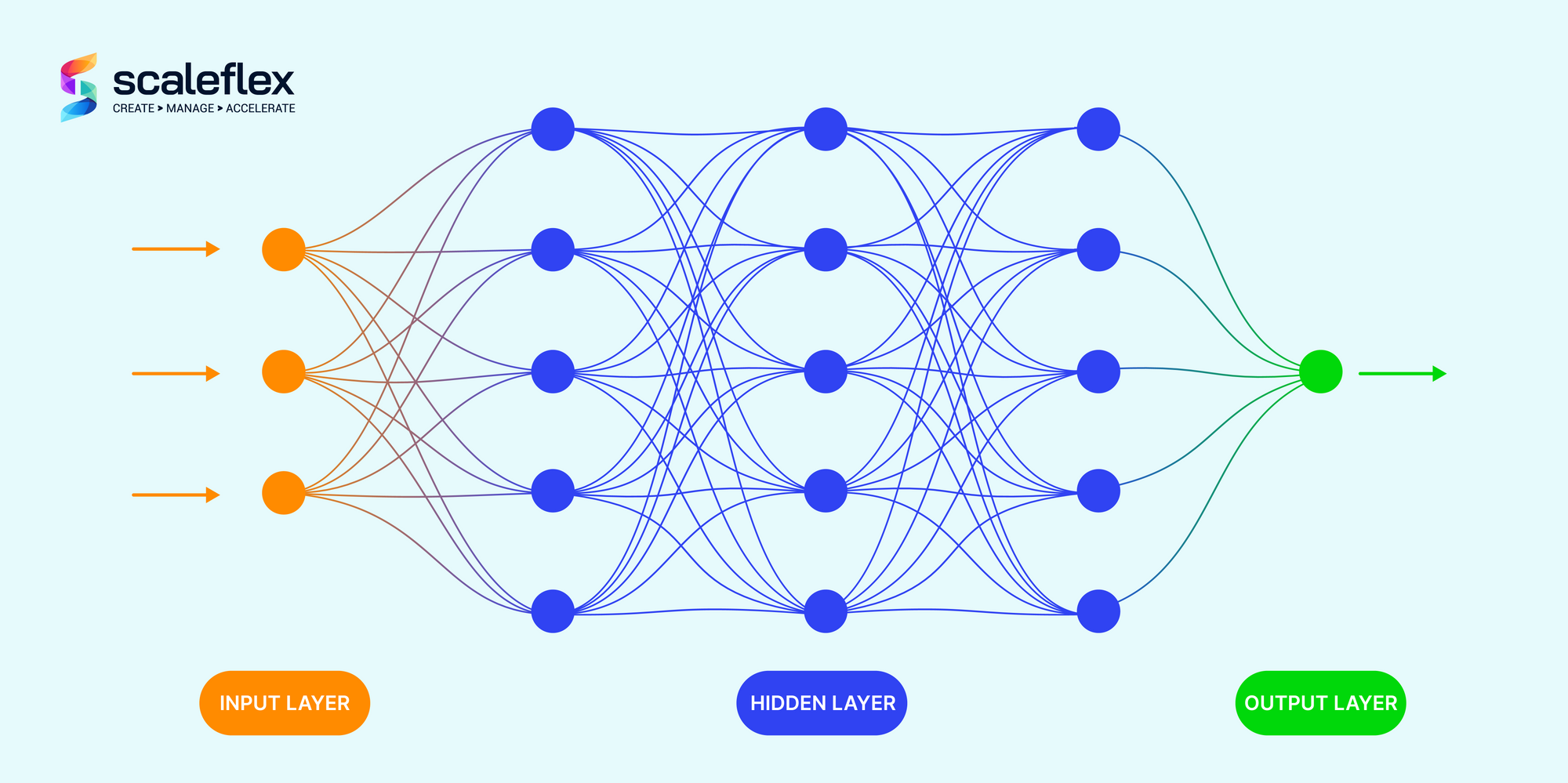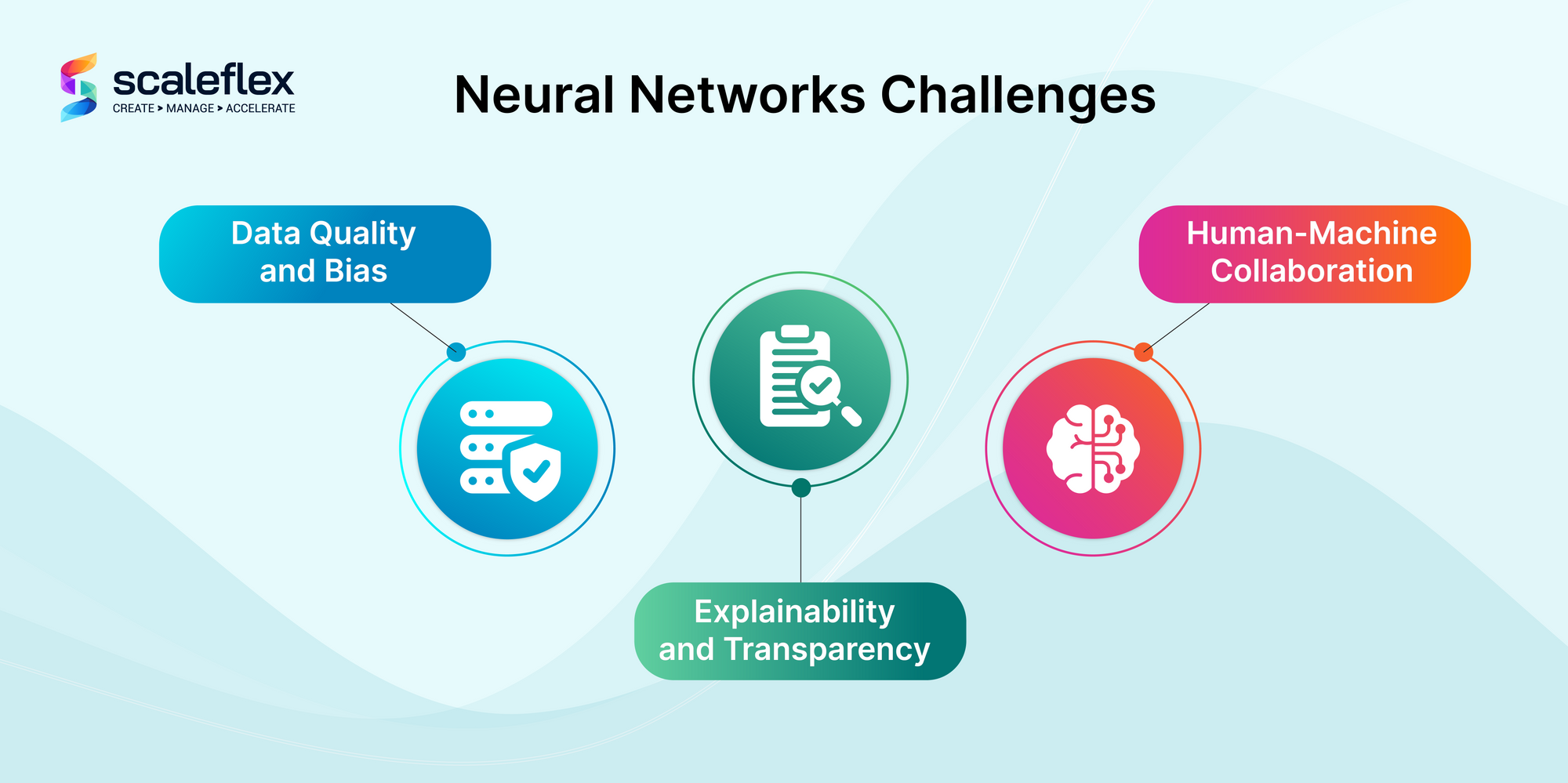How Artificial Neural Networks are Transforming The Digital Asset Management
In our blog, we have already discussed the growing importance of Digital Asset Management (DAM) in today's digital world. DAM plays a key role in organizing, storing, and retrieving digital files, ensuring streamlined workflows and enhancing overall efficiency. Digital assets play a crucial role in driving innovation, enhancing brand reputation, and fueling business growth. However, effectively managing these assets can be a daunting task, particularly as the volume and complexity of digital content continue to grow.
This is where Neural Networks come in. This technology, inspired by the structure and function of the human brain, is capable of learning from vast amounts of data and making intelligent predictions and decisions, which is of great help in getting the most out of the use of a DAM and enhancing it by new functionalities that are made possible.
Throughout this article, we will explore Neural Networks and how they can make a real difference in how we handle digital files and information, so stay put and read on!
Neural Network: What Is It?
Neural networks, also known as Artificial Neural Networks (ANNs), belong to the family of AI algorithms that mimic the structure of the human brain, composed of interconnected nodes that resemble neurons. These nodes process and transmit information, enabling the network to learn from data and make intelligent decisions. Neural networks can be trained on large datasets to perform complex tasks, including:
- Pattern recognition: Identifying patterns and trends in data to extract insights and make predictions.
- Predictive modeling: Forecasting future events or outcomes based on historical data and current trends.
- Anomaly detection: Identifying unusual occurrences or outliers in data that may indicate problems or opportunities.
- Natural language processing (NLP): Understanding and generating human language, enabling tasks like machine translation, chatbots, and sentiment analysis.
- Computer vision: Identifying objects, scenes, and people in images and videos, enabling tasks like self-driving cars and facial recognition.
How do Neural Networks work?

Understanding how a neural network works can be tricky, so we’ll try to keep it simple.
Neural networks are machine learning algorithms that are inspired by the structure of the human brain. We know they are composed of interconnected nodes that resemble neurons, which process and transmit information. Neural networks can learn from data and make intelligent decisions by adjusting the weights and strengths of the connections between these neurons. But how?
The basic structure of a neural network consists of three main layers:
1. Input Layer: This layer receives the input data, which can be anything from numbers to images to text.
2. Hidden Layers: These layers are the core of the neural network, where the majority of the computation takes place. Each neuron in a hidden layer receives input from neurons in the previous layer and processes it based on a set of weights and activation functions.
3. Output Layer: This layer produces the output of the neural network, which can be a prediction, classification, or other meaningful interpretation of the input data.
Neural networks learn from data through a process called training. During training, the network is presented with a large amount of labeled data, where each input sample has a corresponding output label. The network adjusts the weights and activation functions of its neurons to minimize the error between its predictions and the actual labels. This process is called optimization, and it involves iteratively adjusting the weights and activation functions until the network reaches a desired level of accuracy.
Benefits
Neural Networks offer a range of advantages. One of them is the significant enhancement of operational efficiency, as these solutions can execute tasks at a pace that surpasses traditional methods. Additionally, their adaptability is a key asset, enabling them to continuously learn from new experiences and dynamically adjust to changing circumstances. This adaptability positions Neural Network solutions as powerful tools in the face of evolving data and operational environments. Another noteworthy advantage lies in their precision and accuracy, particularly evident in tasks requiring intricate analysis, such as the identification and categorization of digital assets.
Types of Neural Networks
There are many different types of Neural Networks. Still, in this blog, we will only focus on the 3 most common ones: Feedforward Neural Networks (FNNs), Convolutional neural networks (CNNs), and Recurrent neural networks (RNNs).
- Feedforward Neural Networks (FNNs): they are the simplest form of artificial neural networks, where information travels in one direction, from the input layer to the output layer. Each node in a layer connects to all nodes in the subsequent layer, and there are no cycles or loops in the network structure. FNNs are commonly used for tasks like classification and regression.
- Convolutional Neural Networks (CNNs): they use convolutional layers to automatically and adaptively learn spatial hierarchies of features. CNNs excel in tasks like image recognition, object detection, and image classification due to their ability to capture local patterns and relationships within the data.
- Recurrent Neural Networks (RNNs): specialized for sequential data, RNNs allow information to persist within the network by introducing cycles or loops. This enables them to capture temporal dependencies in sequences. RNNs find applications in natural language processing, speech recognition, and any task where the order of the input data is crucial for understanding context and making predictions.
Neural Networks x Digital Asset Management
Neural Networks have emerged as powerful tools when it comes to Digital Asset Management, revolutionizing the way organizations optimize performance and introduce new functionalities to their existing systems. These sophisticated algorithms contribute significantly to DAM systems by, for example, harnessing the capabilities of computer vision, excelling in tasks that were traditionally time-consuming and ultimately streamlining the management of digital assets.
These are some of the areas in which neural networks are contributing:
- Object detection: through the utilization of CNNs, DAM systems can automatically identify and locate objects within images and videos. This feature facilitates precise categorization and tagging of assets, significantly reducing the manual effort required for metadata assignment.
- Image classification: allowing DAM systems to categorize assets into predefined classes or labels based on their visual content, this not only enhances the organization of assets but also improves the searchability and accessibility of content within the DAM repository.
- Auto-tagging: neural networks can be trained to automatically generate descriptive tags for digital assets, ensuring consistency in metadata assignment and reducing the workload on users to tag each asset manually.
- Computer vision: the integration of computer vision, a key component of many Neural Network applications, further augments DAM functionalities. Computer vision enables systems to interpret and understand the visual content of assets, fostering the development of content-based image retrieval systems and enhancing the overall user experience. Thus, certain functionalities such as, for example, object recognition and image classification are evolving and finding new ways to be used. In certain industries like real estate, they can be used to detect floor plans or even to determine whether maintenance work needs to be carried out on a building.
Considerations and Challenges

While the integration of neural networks into DAM has and promises to continue to revolutionize asset management and improve organizational efficiency, it is not without certain potential challenges that may arise and that need to be acknowledged and addressed. These challenges can be broadly categorized into three main areas:
1. Data Quality and Bias: Neural networks are trained on vast amounts of data, so organizations must carefully curate and validate their training data to ensure it is free from biases, accurately reflects the diversity of their target audience, and does not inadvertently perpetuate stereotypes or prejudices.
2. Explainability and Transparency: as with any other AI, concerns about its transparency are just around the corner. Neural networks often operate in a black box, making it difficult to understand the rationale behind their decisions, so organizations should do their best to explain and understand neural network outputs, providing clear justifications for their recommendations and decisions.
3. Human-Machine Collaboration: Humans provide contextual understanding, judgment, and the ability to adapt to unforeseen situations, while neural networks offer computational prowess, pattern recognition, and the ability to process large datasets efficiently. So even if Neural networks excel at automating tasks and analyzing vast amounts of data, they should not be seen as replacements for human expertise and decision-making.
Conclusion
The adoption of neural networks in DAM is revolutionizing the way organizations handle and utilize their digital assets. While traditional DAM systems were once confined to organizing and storing files, neural networks are expanding the capabilities of DAM by introducing new functionalities.
This convergence of DAM and neural networks is transforming the way organizations manage their digital assets, unlocking new opportunities for innovation, efficiency, and productivity. With continued advancements in neural network technology, we can expect to see even more groundbreaking applications in the field of DAM, paving the way for a future where digital assets are not just stored but actively managed, analyzed, and utilized to their full potential.





